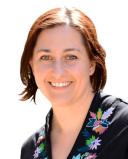Autism
Predicting Autism with Electrophysiology
New research finds potential biomarkers for ASD within the first year of life.
Posted October 21, 2019 Reviewed by Lybi Ma
One thing we know from decades of research in autism spectrum disorder (ASD) is that early intervention improves long-term outcomes. Essentially, the earlier we can diagnose ASD and begin intervention, the better. Unfortunately, our gold standard behavioral measures can only reliably detect ASD with any certainty in children around 2 (or 2.5) years of age. There are often symptoms before that age (e.g. lack of eye contact, not responding to name, repetitive patterns of play), but in terms of an official diagnosis, we cannot be confident of an accurate diagnosis of ASD before 2-years-old.
If we suspect ASD in a child younger than 2-years-old, we often give them a "provisional" diagnosis to help their family obtain the necessary services. It would be a huge improvement if we could accurately distinguish between children who do versus do not have ASD prior to age 2, because we could direct their families towards interventions during critical periods in development.
One area of research that has gained a great deal of attention is the idea that we might be able to use neuroscience to find "biomarkers" for ASD. The goal would be to find a biological signature of ASD using neuroscience that would be more sensitive and accurate at younger ages than our current behavioral diagnostic process allows. That way, children could begin interventions at younger ages, which would improve overall prognosis.
A recent study published in September 2019 in Nature Communications makes important strides in the search for an autism "biomarker".
The Study
The researchers used a longitudinal research design (e.g. they tested the same infants across time), and tested infants between the ages of 3-36 months. Infants were categorized as "high risk" (e.g. an infant with an older sibling diagnosed with ASD), or "low risk" (e.g. an infant without immediate family history of ASD). Once infants were 3-years-old, researchers were able to further separate participants into three groups: children diagnosed with ASD (ASD group), "high risk" infants who were not diagnosed with ASD (HRA-group), and the "low risk" infants who were not diagnosed with ASD (LRC group). Brain activity measured over time was separated into three-time windows: 3-12 months (first year of life), 12-24 months (between the age of 1-2), and 3-36 months (e.g. the entire study time window). The authors wanted to understand which brain measures best predicted ASD outcomes at which time windows.
The Findings: Background
Before talking about the results, we need to define some statistical terms: sensitivity, specificity, positive predictive value, and negative predictive value. Sensitivity refers to the percentage of people who have a given condition that is accurately categorized by a test or model. So if a test has 80% sensitivity, it means that it accurately captures 80% of the people who have a given condition (ASD, in this case), but misses 20%. Specificity refers to the percentage of people who do NOT have a given condition who are accurately categorized by a test.
In our current example, if a test has 90% specificity, it means that 90% of the people without ASD are accurately classified as not having ASD, but that 10% are incorrectly identified as having ASD. Positive predictive value tells us how good a given model or test is at predicting whether someone actually has the given condition. In our example, positive predictive value would refer to the probability of someone classified by the model as having ASD actually having ASD. Negative predictive value is essentially the opposite of positive predictive value. It is the chance that someone classified as not having ASD actually not having ASD. In a perfect world (with entirely accurate tests), all of these values would be 100%. However, no tests are that accurate. The goal is to get the accuracy as high as we can.
The Findings
Results suggested that brain activity in the frontal region of the scalp during the 3-12 month time period most accurately discriminated children who went on to develop ASD (ASD group) from the other two groups (HRA- and LRA) using statistical modeling. Frontal brain activity between 3-12 months of age discriminated between the ASD and HRA- groups at a rate of 89.1%, had a sensitivity of 81.8, and a specificity of 86.2. This model had a positive predictive value of 72% and a negative predictive value of 91.6%. Overall, that's a pretty accurate model and does a good job of predicting who will vs. will not develop ASD.
Implications
This study is exciting and is a critical first step to finding accurate "biomarkers" that can predict which infants are most likely to end up having a diagnosis of ASD at age 3. Essentially, the findings tell us that using brain activity patterns between 3-12 months of age (not behavioral symptoms or parent-rating scales), statistical models can accurately classify 72% of infants who will go onto develop ASD, and can accurately predict 91.6% of infants who will not go on to develop ASD. Not a perfect model, as that means that 28% of infants who went on to develop ASD were incorrectly classified as not ASD, and ~8% of infants who were classified in the ASD group did not go onto develop ASD.
However, as stated, we do not have any perfect tests, even in the medical world. For example, the positive predictive value of mammograms in the U.S. (e.g. how many biopsies actually detect cancer based on a mammogram) ranged between 15-30% in 1991 and doesn't appear to have changed much since that time.
Of course, there is always more research to be done, but this is a great first step, especially since we are talking about a 72% positive predictive value *before* infants can be reliably diagnosed. 3-12 months is a time during which it is exceedingly rare for children to be identified as having symptoms of ASD. Even in cases where children are identified as having a "provisional" diagnosis, it rarely occurs before 14-18 months of age—anything we can do to better predict later ASD between 3-12 months is hugely important.
I am very excited to see where this research goes in the future, and what else can be done to accurately predict ASD risk in young infants and children.
References
Gabard-Durnam, L.J., Wilkinson, C., Kapur, K., Tager-Flusberg, H., Levin, A.R., Nelson, C.A. (2019). Longitudinal EEG power in the first postnatal year differentiates autism outcomes. Nature Communications, 10:4188
Kopans, D. B. (1991). The Positive Predictive Value of Mammography. American Journal of Roentgenology, 158:521-526.




